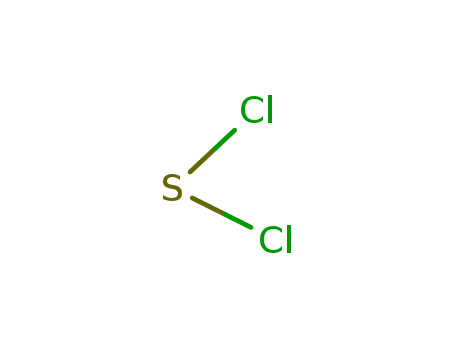10.1021/jo00013a049
The research aims to develop a practical and general approach to synthesizing a series of β-(trialkylstannyl)vinyl sulfoxides and sulfones, which are important synthetic intermediates. The study explores alternative methods due to unsatisfactory yields from a literature procedure involving monolithiation and sulfenylation. The researchers discovered an efficient route by reacting sulfenyl chlorides with acetylene, followed by oxidation to obtain sulfoxides and sulfones. They then introduced the trialkylstannyl moiety using hexamethylditin and a palladium catalyst in N-methylpyrrolidinone (NMP), achieving good yields. The conclusions highlight the development of a high-yielding and scalable method for synthesizing these olefinic stannanes, which can be further utilized in Stille couplings to produce functionalized dienes.
10.1021/ja01606a062
The study investigates the reaction of sulfenyl chlorides with trialkyl phosphites, resulting in the formation of esters of monothiophosphoric acid. Various alkyl and aromatic sulfenyl chlorides, such as methanesulfenyl chloride, benzenesulfenyl chloride, and p-chloroethanesulfenyl chloride, were reacted with triethyl phosphite, tri-n-propyl phosphite, and tri-n-butyl phosphite. The reactions were rapid, even at Dry Ice temperatures, indicating a nucleophilic displacement of chloride accompanied by the elimination of alkyl chloride. The study also compared the reactivity of these sulfenyl chlorides with that of sulfur monochloride and noted that the sulfenyl chlorides reacted at least as readily as acyl halides, which are known to react exothermally with tertiary phosphites. The compounds synthesized were used for biological testing in cancer chemotherapy studies, with particular interest in the 6-chloro thioester as a potential mustard analog.
10.1021/jo00342a036
The research focused on the synthesis and investigation of a new class of reactive organosulfur compounds known as α-chlorothiosulfenyl chlorides (R2C(Cl)SSCl), which were derived from the reaction of various aromatic and aliphatic thiones with sulfur dichloride in dry carbon disulfide. The study aimed to explore the potential of these compounds and understand the mechanisms involved in their transformations. The researchers found that the reaction of α-chlorothiosulfenyl chlorides with triphenylphosphine regenerates the thiones, accompanied by the corresponding ketones. Key chemicals used in the process included sulfur dichloride, carbon disulfide, thiones such as thiobenzophenone, xanthione, and various other aromatic and aliphatic thiones, as well as triphenylphosphine. The conclusions drawn from the research highlighted the formation of α-chlorothiosulfenyl chlorides and their potential synthetic utility, noting their unusual reactivity with multiple electrophilic sites and the complexity of the products formed upon reaction with triphenylphosphine.



 T,
T,  N,
N,  C
C


